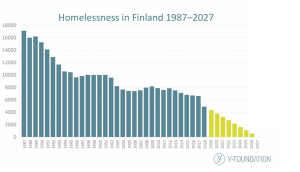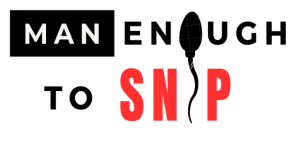As part of LSE’s Advocacy, Campaigning and Grassroots Activism course, taught by Duncan Green and Tom Kirk, students have to design a strategy for a campaign they would like to run, and write a blog or produce a short video (vlog) promoting it. They are assessed on both, as well as on group projects analysing a past story of change. Here are some of the best vlogs and blogs from last year’s amazing cohort – enjoy!
Green to Go: The Better Way to Take Away.
Martin Caforio
When you get a daily coffee, your local chain tells you the cup is “sustainable.” Recyclable plastic, compostable, responsibly sourced and produced. But even when you recycle it correctly, cafes and chains are forcing you to contribute to the more than 3 billion disposable cups wasted each year in the U.K. and the rising CO2 emissions related to this waste.
In fact, only 0.25% of all cups are recycled. That’s because most cups advertised as recyclable end up in a landfill due to coffee contamination, or because they actually have to be recycled in store. Not very “to go,” is it?
Now, when you pay for your monthly coffee subscription, part of that money goes towards each one of the 3+ billion paper cups used each year in the U.K. That increases you and your coffee shop’s carbon emissions, and slowly takes money from your wallet which would be better spent on a sweet pastry or tasty sandwich.
We think that if you go to your coffee shop each day with your own cup, you should pay less for your subscription. Not only would this save you money each month, but it would also drastically reduce the carbon footprint of your morning caffeine boost and help reduce landfill waste and the piles of paper and plastic on our streets.
Introducing Green to Go: a green, and cheaper, monthly subscription.
It’s easy to forget your cup, but through our proposed partnership with reusable cup brands, you would receive a slim, easily storable cup with your first month and it can become part of your daily Go Bag when you leave home each day!
With your help, we can make this Green to Go plan a reality: saving you money and the environment at the same time. Select the Green to Go plan below:
Carlota Ramons Lopez Duplan
There’s a chicken in the desert!
Jessica Louise
As an active campaigner for Trussell Trust, one of the UK’s leading charities supporting food banks throughout the nation, I am constantly amazed by the levels of support pledged from corporate sponsors and donors. In a previous blog, I’ve written about Trussell Trust’s work with Tesco, and the significance of Tesco’s Food Collections in stores around the country.
Here, I want to write about a campaign stunt by Kellogg’s, who are working together with Trussell Trust and other leading food charities to tackle the growing problem of food deserts in the UK.
What is a food desert?
They’re not literal deserts, but they may as well be. Food deserts are areas, often urban, where there is limited access to nutritional and affordable food. This could be for a range of reasons: high poverty levels, bad public transport links, or just simply a lack of affordable supermarkets in the area. It’s not that there’s no food in these areas – it’s just that the only options are small convenience stores which are more expensive, or takeout places (basically just your local chippy or kebab shop).
With rising living costs, people are experiencing reduced budgets, and for some people in food deserts, the cost of the bus fare to the supermarket could be the cost of a meal.
Food deserts are a massive problem in the US, with research suggesting a high correlation between food deserts and obesity (as the lovely cartoon below shows), but they’re a growing problem in the UK too, with over 10 million people living in one.
Credit: Spoon University.
What’s the solution?
There’s no one simple solution. Getting supermarkets to build in underserved areas, and improving nutrition education are just some of the things that can be done.
So, what is being done?
A campaign has been launched by a coalition headed by Trussell Trust, which aims to encourage supermarkets to build in food deserts in the UK. In various locations, pop-up supermarkets have appeared which aim to raise awareness about the importance of accessible and healthy food. A petition has been launched, asking the government to take action.
Support from Kellogg’s!
 Corporate support can make all the difference to a campaign like this. Big, multi-million corporations hold a lot of power in raising awareness and calling the public to action. Last month, it was announced that Kellogg’s would be joining the coalition and recently a key part of their campaign was rolled out. They’ve changed their Cornflakes packaging, and the famous Cornflakes chicken is now in a desert! This is a great tactic, a marketing stunt that not only puts Kellogg’s in the headlines and boosts sales for them, but also reaches millions of households.
Corporate support can make all the difference to a campaign like this. Big, multi-million corporations hold a lot of power in raising awareness and calling the public to action. Last month, it was announced that Kellogg’s would be joining the coalition and recently a key part of their campaign was rolled out. They’ve changed their Cornflakes packaging, and the famous Cornflakes chicken is now in a desert! This is a great tactic, a marketing stunt that not only puts Kellogg’s in the headlines and boosts sales for them, but also reaches millions of households.
The effect is eye-catching. Enter any cereal aisle in any supermarket and you notice it immediately. Scan the QR code, and you’re taken to the government petition which has already reached 10,000 signatures.
So will it work?
Time will tell, but as people become more aware of the issue, pressure on the government to act builds. Offering tax breaks to large supermarkets who choose to build in food deserts is a good incentive to encourage them into these areas. Tesco’s and Sainsbury’s – the largest supermarkets in the UK – are probably the most likely candidates to respond to the campaign. Whatever ends up happening, Kellogg’s will go down in history as being the first cereal company to put a chicken in a desert. We can only hope the chicken will survive by accessing affordable, healthy, chicken feed.
Holly Ingram
Are you #ManEnoughToSnip?
Valerie Barki
If you’re anything like me, you may find yourself pondering the vast array of birth control options available. From pills to patches, condoms to intrauterine devices, the choices can be overwhelming. But amidst this sea of contraceptive possibilities, there’s one option that often gets overlooked: the vasectomy.
Welcome to the #ManEnoughtoSnip movement!
In a society where reproductive choices often fall disproportionately on women, and options grow increasingly limited with abortion bans reinstated in multiple states already, it’s time to break free from outdated stereotypes that somehow equate taking responsible steps to prevent unplanned pregnancy with being emasculated. Thanks a lot, toxic masculinity.
So, let’s dive into why vasectomies are actually a great birth control option:
Dispelling the Myths
Let’s start off with snipping some rumours in the bud (get it?). Contrary to popular belief, getting snipped doesn’t affect your manhood or libido. It’s a straightforward procedure that simply prevents sperm from reaching the semen. So, rest assured, your masculinity won’t take a hit. And even better, they can be reversed!
Quick and (mostly) Painless
“But won’t it be painful?” we hear you ask. Fear not, dear reader! Vasectomies are typically performed in about 20 minutes and under local anaesthesia, making the procedure speedy and virtually painless. You might experience some discomfort afterward, but it’s usually mild and easily managed with over-the-counter painkillers. And, recovery takes up to a week max. Seems like a small price to pay for long-term peace of mind if you ask me.
Kiss your pregnancy worries goodbye
One of the most significant advantages of vasectomy is its efficacy as a birth control method – it is up to 99.99% effective! Don’t believe me? Check out this Planned Parenthood article detailing just how protected from pregnancy you’re about to be. Say goodbye to all your accidental pregnancies worries. (I know, I was shocked when I found out too.)
The Cost Factor
“But isn’t it expensive?” you inquire. Not necessarily! Vasectomies are often covered by insurance, reducing or eliminating the financial burden. Considering the long-term savings on contraception, a vasectomy can be a cost-effective choice. However, one caveat is that the cost of reversals is unfortunately not as commonly covered by insurance. Read more about it here and make sure to consult with your insurance providers!
Breaking the Stigma
Now, let’s address the elephant in the room: the stigma associated with vasectomies. Society has often portrayed male sterilization as emasculating or a sign of weakness. But here’s another way to look at it: choosing vasectomy demonstrates responsibility, consideration for your partner’s well-being, and a commitment to shared family planning. It’s time to break free from outdated stereotypes and celebrate men who are #ManEnoughToSnip.
Not yet convinced?
Ok, you’re a tough nut to crack, we get it. This is an important decision. But hear this, did you know that Jay Cutler and George Clooney have both undergone vasectomies themselves. Don’t believe me? Check out this list of famous men who have done so and ask yourself once more what’s holding you back.
At the end of the day, all we ask is this…
In a nutshell, vasectomies are a game-changing birth control choice for men. But here’s the deal: no matter what birth control option you opt for, we need everyone to step up, break the stigma, and ditch these outdated misconceptions about vasectomies.
That said, only one question remains: are you #ManEnoughToSnip?
Debra Francis
Housing First
A strategy to eradicate homelessness in Ireland
Saiorse Browne
 Let’s talk about the elephant in the room: homelessness in Ireland. It’s a problem that has grown exponentially over the past few years, with child homelessness increasing by 227.7% and adult homelessness rising by nearly 95.5%. The numbers are staggering, and they’re only getting worse. But what if I told you that there’s a solution to this problem? A strategy that has been proven to work in other countries and could work in Ireland too? That’s right, I’m talking about Housing First.
Let’s talk about the elephant in the room: homelessness in Ireland. It’s a problem that has grown exponentially over the past few years, with child homelessness increasing by 227.7% and adult homelessness rising by nearly 95.5%. The numbers are staggering, and they’re only getting worse. But what if I told you that there’s a solution to this problem? A strategy that has been proven to work in other countries and could work in Ireland too? That’s right, I’m talking about Housing First.
 Housing First is a model that prioritizes getting homeless people into stable homes without requiring them to first achieve ‘housing readiness’ by engaging with addiction services, mental health supports, or securing employment. It’s not predicated upon sobriety or mental health treatment, which makes it a unique and highly effective model. The most successful example of Housing First can be found in Finland, where the model has eradicated homelessness at a functional level. That’s right, Finland has virtually no homeless people thanks to Housing First. Why can’t Ireland follow in their footsteps?
Housing First is a model that prioritizes getting homeless people into stable homes without requiring them to first achieve ‘housing readiness’ by engaging with addiction services, mental health supports, or securing employment. It’s not predicated upon sobriety or mental health treatment, which makes it a unique and highly effective model. The most successful example of Housing First can be found in Finland, where the model has eradicated homelessness at a functional level. That’s right, Finland has virtually no homeless people thanks to Housing First. Why can’t Ireland follow in their footsteps?
 The Housing First model was piloted in Ireland in 2011 on a small scale. Due to its success, two leading homelessness NGOs in the state were contracted to deliver 300 Housing First tenancies within three years. By 2019, these 300 tenancies had an 86.8% sustainment rate. However, despite Housing First being internationally recognized as the most effective model to combat homelessness, the Irish strategy to create 264 Housing First tenancies per annum is markedly small in execution. The lack of committed execution of the Housing First model by government policy has led to the situation where homelessness figures increased
The Housing First model was piloted in Ireland in 2011 on a small scale. Due to its success, two leading homelessness NGOs in the state were contracted to deliver 300 Housing First tenancies within three years. By 2019, these 300 tenancies had an 86.8% sustainment rate. However, despite Housing First being internationally recognized as the most effective model to combat homelessness, the Irish strategy to create 264 Housing First tenancies per annum is markedly small in execution. The lack of committed execution of the Housing First model by government policy has led to the situation where homelessness figures increased
every month in 2022 and are on track to continue this upward trajectory in 2023.
 But all is not lost. We have the power to change things. As a member of the non-governmental coalition Raise the Roof, I believe that we can push the government to take action and implement a Housing First strategy that will work for Ireland. It’s important to understand the power dynamics at play here. The national government holds the key legal and policy powers, but local government and NGOs play a significant role in the practical provision of homelessness services. We need to work together and put pressure on those in power to commit more resources to the eradication of homelessness.
But all is not lost. We have the power to change things. As a member of the non-governmental coalition Raise the Roof, I believe that we can push the government to take action and implement a Housing First strategy that will work for Ireland. It’s important to understand the power dynamics at play here. The national government holds the key legal and policy powers, but local government and NGOs play a significant role in the practical provision of homelessness services. We need to work together and put pressure on those in power to commit more resources to the eradication of homelessness.
And there’s a critical juncture coming up that we can’t ignore: the next general election in March 2025. Housing will undoubtedly be the most contentious issue among the parties, and we need to ensure that all candidates are aware of the importance of Housing First as a viable solution to the problem of homelessness. So, let’s raise our voices and demand change. Let’s work together to implement a Housing First strategy that will work for Ireland. We can do this. We can eradicate homelessness in our country. It’s time to take action.
The views expressed in this post are those of the author and do not reflect those of the International Development LSE blog or the London School of Economics and Political Science.









